From Floor to Sky looks at a relatively little known, but pivotal, moment in the development of British sculpture: the period in the late 1960s and early 1970s when tutors and students at St Martin's School of Art and the Royal College worked together in challenging traditional attitudes to the medium. New ways of teaching and thinking about sculpture were evolved, and new materials such as fibreglass and plastic introduced. This exhibition focuses on the students of one particular tutor, Peter Kardia, whose radical teaching methods brought politics, theory, perception and perspex into the studio.
The group of 28 former students brings together an extraordinary array of luminaries, including Richard Long, Hamish Fulton, Richard Wentworth, Bill Woodrow, Alison Wilding and many others. But rather than looking only at their student work under Kardia, the show contrasts two works by each artist: one from their earliest period and one current piece. Thus the exhibition resembles a graduate show, but one that illustrates what happens to the artist outside the sheltering art school environment.
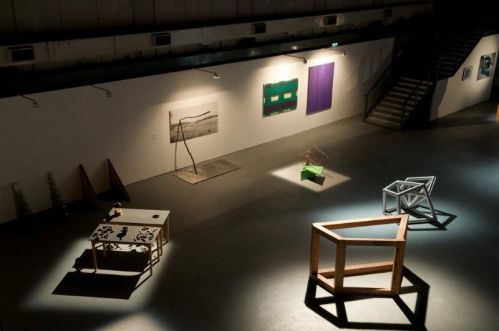 Some of the artists have followed a consistent path, extending their early ideas into maturity; others have travelled far from their student ideas. The format of the exhibition becomes a guessing game, as you wonder 'which came first?' and 'what came between?' Keith Brown's beautiful early work Clone Installation (1980-82), for instance, is made of many tree trunks thickly sliced, then restacked and glued together. But 30 years later the artist is working in a completely different way with very advanced hologram technology. On the other hand, two Richard Deacons seen side by side – a wooden sculpture made of right angles and clean lines, Untitled #1 (1977), next to a recent tangle of stainless steel, Siamese Metal #3 (2008) – show that the forms continue to have a very strong relationship to each other, and the evolution from one to the other is very clear (right: works by Carl Plackman and Bill Woodrow. Photo Michael Maziere).
Some of the artists have followed a consistent path, extending their early ideas into maturity; others have travelled far from their student ideas. The format of the exhibition becomes a guessing game, as you wonder 'which came first?' and 'what came between?' Keith Brown's beautiful early work Clone Installation (1980-82), for instance, is made of many tree trunks thickly sliced, then restacked and glued together. But 30 years later the artist is working in a completely different way with very advanced hologram technology. On the other hand, two Richard Deacons seen side by side – a wooden sculpture made of right angles and clean lines, Untitled #1 (1977), next to a recent tangle of stainless steel, Siamese Metal #3 (2008) – show that the forms continue to have a very strong relationship to each other, and the evolution from one to the other is very clear (right: works by Carl Plackman and Bill Woodrow. Photo Michael Maziere).
The exhibition, curated by Kardia himself, is housed in a vast underground former concrete-testing facility (located remarkably close to Baker Street Station), and the scale and materials of this intriguing body of work benefit from being seen in this massive industrial space. The gallery is entered from above, providing a panoramic view of the exhibition before you move into a subterranean world full of large, intriguing structures such as Carl Plackman's Decoy (2000), two tables with mysterious cast items hanging from the bottom, or Bill Woodrow's Untitled (1971) comprising a tree trunk resting against a photograph on the wall and floor.
If the "then and now" remit has led to a somewhat uneven show, it is one that is well worth seeing and presents an illuminating contrast to Tate Britain’s current display, Sculpture after 1960, featuring several of the same artists – Deacon, Woodrow and Wilding. While Tate presents these figures as already embedded in the history of British art, From Floor to Sky recreates the excitement and experimentation of a dynamic period in British art education.
 Some of the artists have followed a consistent path, extending their early ideas into maturity; others have travelled far from their student ideas. The format of the exhibition becomes a guessing game, as you wonder 'which came first?' and 'what came between?' Keith Brown's beautiful early work Clone Installation (1980-82), for instance, is made of many tree trunks thickly sliced, then restacked and glued together. But 30 years later the artist is working in a completely different way with very advanced hologram technology. On the other hand, two Richard Deacons seen side by side – a wooden sculpture made of right angles and clean lines, Untitled #1 (1977), next to a recent tangle of stainless steel, Siamese Metal #3 (2008) – show that the forms continue to have a very strong relationship to each other, and the evolution from one to the other is very clear (right: works by Carl Plackman and Bill Woodrow. Photo Michael Maziere).
Some of the artists have followed a consistent path, extending their early ideas into maturity; others have travelled far from their student ideas. The format of the exhibition becomes a guessing game, as you wonder 'which came first?' and 'what came between?' Keith Brown's beautiful early work Clone Installation (1980-82), for instance, is made of many tree trunks thickly sliced, then restacked and glued together. But 30 years later the artist is working in a completely different way with very advanced hologram technology. On the other hand, two Richard Deacons seen side by side – a wooden sculpture made of right angles and clean lines, Untitled #1 (1977), next to a recent tangle of stainless steel, Siamese Metal #3 (2008) – show that the forms continue to have a very strong relationship to each other, and the evolution from one to the other is very clear (right: works by Carl Plackman and Bill Woodrow. Photo Michael Maziere).The exhibition, curated by Kardia himself, is housed in a vast underground former concrete-testing facility (located remarkably close to Baker Street Station), and the scale and materials of this intriguing body of work benefit from being seen in this massive industrial space. The gallery is entered from above, providing a panoramic view of the exhibition before you move into a subterranean world full of large, intriguing structures such as Carl Plackman's Decoy (2000), two tables with mysterious cast items hanging from the bottom, or Bill Woodrow's Untitled (1971) comprising a tree trunk resting against a photograph on the wall and floor.
If the "then and now" remit has led to a somewhat uneven show, it is one that is well worth seeing and presents an illuminating contrast to Tate Britain’s current display, Sculpture after 1960, featuring several of the same artists – Deacon, Woodrow and Wilding. While Tate presents these figures as already embedded in the history of British art, From Floor to Sky recreates the excitement and experimentation of a dynamic period in British art education.
- From Floor to Sky is at Ambika P3 until 4 April.



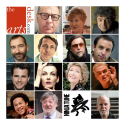

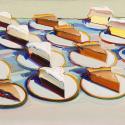


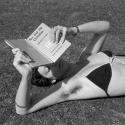
![SEX MONEY RACE RELIGION [2016] by Gilbert and George. Installation shot of Gilbert & George 21ST CENTURY PICTURES Hayward Gallery](/sites/default/files/styles/thumbnail_125_x_125_/public/mastimages/Gilbert%20%26%20George_%2021ST%20CENTURY%20PICTURES.%20SEX%20MONEY%20RACE%20RELIGION%20%5B2016%5D.%20Photo_%20Mark%20Blower.%20Courtesy%20of%20the%20Gilbert%20%26%20George%20and%20the%20Hayward%20Gallery._0.jpg?itok=3oW-Y84i)
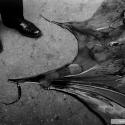
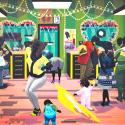
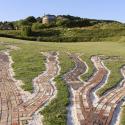
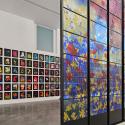
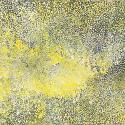
Add comment